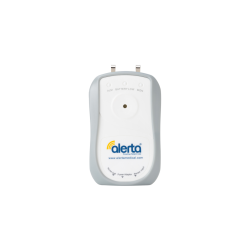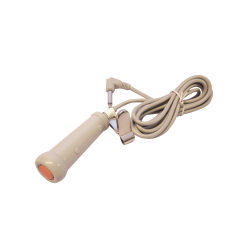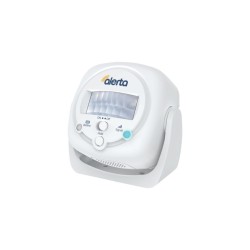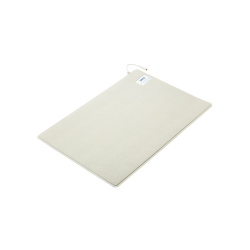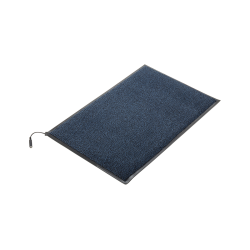Wired Patient Alarms
There are 9 products.
Active filters
About Wired Patient Alarms
Reliable Hardwired Monitoring for Patient Safety
Wired patient alarms provide dependable monitoring systems connecting sensors directly to alarm units or nurse call systems, detecting patient movement and alerting care staff to fall risks across care homes, hospitals, and healthcare facilities throughout England, Scotland, Wales, and Northern Ireland. These proven safety systems utilise physical cable connections between sensors monitoring beds, chairs, and floor areas and receiving units producing alerts, offering reliability through hardwired operation. Care environments rely on wired patient alarms for monitoring high-risk patients requiring dependable surveillance, detecting bed and chair exits preventing falls, alerting staff to unsafe mobilisation attempts, integrating with existing wired nurse call infrastructure, and providing cost-effective monitoring where wireless systems are unnecessary. Modern wired alarm systems incorporate features including simple reliable operation through proven technology, varied sensor types addressing different monitoring needs, clear audible alerts ensuring staff awareness, nurse call integration enabling comprehensive facility alerting, and straightforward installation compatible with existing infrastructure. The provision of wired patient alarm systems demonstrates commitment to falls prevention through established technology, supports cost-effective safety provision, enables integration with existing systems, and provides reliable monitoring across professional care environments.
The implementation of wired patient alarms directly supports CQC compliance through proactive falls prevention, cost-effective safety provision, and demonstration of reliable monitoring technology. Wired systems offer particular advantages in situations where wireless infrastructure is unnecessary or where integration with existing wired nurse call systems provides operational benefits. Wired alarms address falls prevention requirements by providing dependable patient movement detection, alerting staff before falls occur enabling intervention, monitoring patients without restrictive devices maintaining dignity, and integrating with nurse call systems enabling comprehensive facility alerting. Clinical applications include high-risk patient monitoring providing reliable surveillance, integration with wired nurse call systems maximising existing infrastructure, situations where electromagnetic interference concerns affect wireless system suitability, cost-sensitive implementations where wired systems provide economical solutions, and simple monitoring scenarios where wireless system sophistication proves unnecessary. Care organisations benefit from wired alarms through proven reliable technology, cost-effectiveness particularly for smaller implementations or where integration with wired nurse call exists, simple operation with minimal training requirements, and reduced maintenance compared to battery-dependent wireless systems. Modern wired alarm systems incorporate features such as multi-sensor capability, visual alert options, and standardised connectors throughout England, Scotland, Wales, and Northern Ireland.
Selecting and implementing wired patient alarm systems requires assessment of monitoring needs, appropriate system specification, and integration planning across care facilities throughout the UK. Organisations should evaluate falls risk determining monitoring requirements, assess facility infrastructure particularly existing nurse call systems, consider operational factors including wired system installation implications, and calculate equipment quantities ensuring adequate coverage. System selection should prioritise appropriate sensor types including bed mats, chair sensors, and floor mats addressing monitoring scenarios, suitable alarm units with clear alerts or nurse call integration capability, reliable construction ensuring consistent operation, standardised connections enabling sensor interchangeability, and appropriate cable lengths accommodating typical bed and chair placements. Implementation protocols must encompass sensor installation ensuring proper positioning and secure cable routing, staff training on system operation including alert response and basic troubleshooting, integration with care plans documenting alarm use, and procedures ensuring consistent monitoring. Quality assurance measures should include regular system testing verifying functionality, sensor inspection checking for wear particularly mat sensors subject to patient weight, documented maintenance schedules, and monitoring of alert response effectiveness. Modern wired systems incorporate features such as tamper detection, low-profile sensors, and modular designs. Organisations should establish protocols for wired alarm allocation, integrate with comprehensive falls prevention strategies, and maintain documentation demonstrating monitoring provision. Individual care plans should specify sensor types and locations, alert routing, and staff response requirements. Staff education should address wired alarm purposes, sensor care preventing damage, cable management preventing trip hazards, and recognition that alarms complement comprehensive falls prevention. System management should address cable routing safety, sensor stock maintenance, and compatibility when replacing components. By implementing wired patient alarm systems alongside professional falls prevention protocols, care organisations throughout England, Scotland, Wales, and Northern Ireland demonstrate their commitment to CQC standards, reliable falls prevention monitoring through proven technology, cost-effective safety provision, and dependable patient surveillance supporting timely staff intervention preventing falls whilst maintaining person-centred care approaches across care environments.

